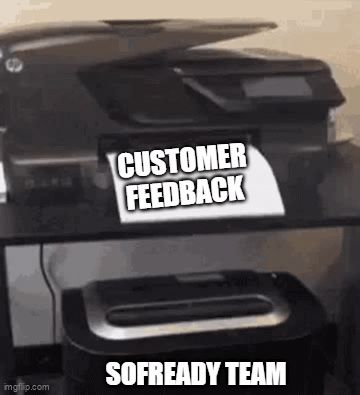The army spends a lot of time in meetings. Few of them are worth their cost, partly because we don’t measure it. Once, sitting in just such a meeting, I built an excel tool to calculate the cost of the meeting. It pulled from the DoD pay chart, and with a couple lookups built in, you just ticked off how many of each rank were in the meeting. Input a start time and whenever you refreshed, you’d get an updated cost in dollars of your current meeting. Was that chief of staff synch really worth the $86,753.09 you just spent?
One meeting I looked at canceling entirely was ‘command and staff’. Just about every battalion and brigade across the army has a command and staff synch, and it tends to be horribly inefficient, mostly because it’s not data driven. Out at 1-1, we’d already reduced the frequency to once a fortnight and the lion’s share of the meeting was already covered by the XO in his Monday meeting.1
We ended up keeping the meeting principally for two reasons. The first was in keeping with the old army adage, ‘soldiers do what you inspect’. Put another way, if you don’t shine the light in the corners every once in a while, the roaches take over. This meant holding people’s feet to the fire on occasion to get problems fixed.
But the more important reason we kept the meeting every other Friday was it was a great platform to reinforce and drive change. As I mentioned previously, most of the command and staff meetings I’d sat through over the previous eighteen years were ineffective virtue signaling. PowerPoint slides with problems reduced to pie charts and percentages left everyone trying to win a made-up wiener dog race, not focusing on fixing actual issues. Now that I was the commander, it was my meeting. So, we started implementing changes I’d wanted to try out for over half a decade.
First up, obviously, was kill PowerPoint. Right off the bat this saved the entire staff the wasted time of transposing data to cardboard cutout pictures on a slide. We focused on keeping the data in whatever format it came in. The only thing we added was a single column to each of the data tables where commanders could leave justifications. We did not recreate the SharePoint database I’d made back when I was an XO. My S1 and I looked at doing it, but decided not to partly because I knew how much work it was going to take, and we did not have much SharePoint expertise across the staff. I was also determined to try and improve the systems we did have, namely DefenseReady. The staff and I provided detailed write-ups on how the system needed to be improved, and even sat down with reps from the company at one point. None of the suggested changes were implemented.2
Changing the culture of PowerPoint took a few reps. One early example was with NCOERs. Instead of the normal PowerPoint slide with a bar graph of the company averages for on-time submission we now had a table of every soldier, sorted by the most overdue. Suddenly there was a name and a number at the top of a table. So, I asked the bravo company commander, 'What's the story with Smukatela's 120-day overdue NCOER?'. The commander, caught flat footed, looked at the screen, and then at his notes trying to will the answer into existence in his green notebook. He stumbled and tried to deflect, 'Ummm… the S1 just updated this today, sir.’ I scowled at him and replied, 'Okay, so back on Monday, when the XO briefed this, and it was only 116 days overdue? What was the reason then?'. He swallowed and offered he'd get back to me. The rest of the battalion got the message. We weren’t fighting averages anymore. I was comfortable diving through raw data, and the commanders and staff would need to get there too.
But we also stopped worrying about chasing every red herring. Red had a place to live, and so we focused on the problems that needed solving, not blindly chasing everything. We could be more targeted to what we actually needed to fix. The army sets absurdly high standards for many of the various reports and requirements it has, often demanding 98% currency on annual requirements. But if it’s an annual requirement, then you can presume that roughly 1/12th of your formation is out of tolerance every month. In reality, 92% current is effectively 100%. I set that as the minimum for the battalion on anything administrative and annual. I told the commanders as long as they kept those requirements above 92% then I didn’t care, and didn’t want to even be briefed on them. I also extended that top cover to all the staff, so when the higher group staff complained down to them, we weren’t meeting army standards, they could deflect back up to me.
8% isn’t a perfect measure, since there's a lot of noise in the data as soldiers PCS in and out of units. But it works as a good baseline. We set similar baselines where it made sense. I didn’t even want to hear about anyone expired on their language training until they were over 60 days overdue, leaving the XO and commanders room to worry about those over 30. Anything less than that? ‘I don’t care’. We were getting beat up by our higher command about our language currency and scores, but when we applied the above, a list of four-dozen expired soldiers was reduced to just 10. Instead of harassing a bunch of soldiers who are not the problem, we focused on solving the laggards. We found the signal in the noise normally hidden in just red pie slices on slides.
By keeping the data as data, and filtering out what didn’t matter, we could focus on what actually needed fixing. It also freed up a bunch of time. But what to do with all that unleashed staff and soldier capacity? Possibly the most important decision I made as the commander was not to fill it.
Instead, I told every soldier to do one of two things. They’re first instinct should be to innovate. Test and try a new way of doing things. It takes free time to invent new processes. You need time to think, to imagine, and to be wrong. You need to test and to refine and to teach the new system to others. Overburdened organizations can’t do any of this, so they remain stuck in old ways of doing things. Drowning men don't invent a new way to swim. An organization drowning in red on PowerPoint can't try anything new.
But for those organizations that can innovate, the returns on that investment compound. Once you get additional time, you can use it to grow even more time. The gains can be exponential, and your formations can move faster and faster. The bowl full of OODA loops starts to fill up.
Out in Oki I watched as each staff section got leaner and more effective. My signal shop was testing new ways to move data every day, all while still fielding long range commo shots from around the world. Teams were getting more and more training in, challenging themselves to find new ways to work in the face of a growing threat from China. The S1 shop was on top of personnel actions and awards in a way I’d never seen and ensured soldiers would leave the battalion with a digital copy of all their paperwork.
As I neared the end of my time in command, I did find myself wondering if I’d made a mistake. We weren’t operating like any other battalion I’d served with. And I’d seen time and again how new digital systems built on data were deleted and rooted out by the next commander. I asked my majors about it one day, if instead I should have been focusing on teaching young captains how to thrive in an organization built on PowerPoint. To my surprise they disagreed. ‘The commander doesn’t need to see the process. We’re going to keep doing it this way.’
On the day I handed over the battalion colors to the next commander, I was proud to entrust him with the fastest and best trained unit I'd ever served in. The staff was chock full of young officers and NCOs that had the spark of innovation lit within them, and I'm confident they will continue to change and improve every unit they serve in as they progress.
Obviously, I’m biased toward innovation, but I also understand not everyone is. And an organization where every person is constantly innovating is chaos and destined to fail. Everyone needs license to try new things, but not everyone should be doing it all the time. Which is why there was always that second priority I gave the soldiers. If a soldier couldn't come up with a new way to work or a process to refine, I told them 'Go to the gym'. By all appearances, they did as much of the latter as they did the former.
Of the 515 soldiers in the battalion, only three hadn't passed an ACFT before I left command.3 I don't know of a single battalion in the army that can boast of that in any year, never mind in the face of the challenges of covid. Gains are gains, and data innovation enabled our battalion the time they needed to get them in the office and in the gym. OODA loops of gains.
‘Biweekly’ begets a lot of confusion. Is it twice a week or once every two weeks? Thankfully the English invented the word ‘fortnightly’ to describe once every fourteen days. And now that is a thing you know.
DefenseReady is now named SOFReady, the system continues to fail at its job, all while costing SOCOM millions of dollars.
two had temporary profiles, one a permanent one.







"trying to win a made-up wiener dog race" - I'd like the next article to discuss the difference between organic and synthetic wiener dog races.
This was a great article- I love the 92% concept on the annual stats. I am struggling with my conception of keeping the chain of command content with briefable statistics that the DCG-S will monitor (and thus will shape the outcome of my subordinate's evaluations) and getting after reform and tasks that need doing. Keep putting these out!